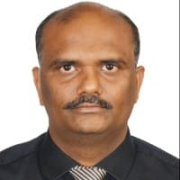

Find out what your peers are saying about Apache, Red Hat, Oracle and others in Application Server.
Oracle Fusion Middleware is a good product that meets ROI expectations.
It's not a matter of the solution; it's a matter of the clients and the approach that we follow.
If we can maximize that, we can get the full price benefit of the solution.
We have observed a good return on investment, with calculations based on a five-year ROI plan.
Oracle provides eight-level customer service and support.
Customer service for Oracle products, including Oracle Fusion Middleware, is rated at nine points out of ten, indicating it is quite satisfactory.
A traditional challenge with SAP support is that SAP teams only support the standard functions, which are part of the product.
Establishing the right channels was a challenge, as BTP was new to everyone, including our SAP contacts.
I would rate the support a ten because there are a lot of knowledge-based articles published, and most of them are available online.
For on-premises deployment, scalability has to be managed manually.
SAP S/4HANA scales exceptionally well.
It is very easy to scale within businesses, especially when a new business falls within the range.
Scalability is a key strength of SAP, especially for HANA, compared to all the other ERPs.
Overall, Oracle Fusion Middleware's stability is good.
The SAP HANA system is not very easy to unlock, and it's something strange as, compared to other databases, when transaction logs are full, you stop the system, run the transaction log backups, and then restart.
Not very often, but it can happen, especially with user load; if many people use the system at the same time, there might be issues depending on various factors.
I rate the stability of SAP S_4HANA as fairly stable because we have never experienced any downtime from SAP, and the performance is good.
Although Oracle provides support, I need the appropriate IT team to adopt these new features.
The guides often have errors, such as web scripting issues, and can be difficult to follow.
Organizations face challenges like adapting to new technologies rapidly, and whether customers are early or late adopters influences their experience.
I can perform a lot of data manipulation directly on SAP using S-One, without having to resort to Excel, unlike with View ID.
The performance of the SAP interface could be improved.
Oracle Fusion Middleware is generally expensive, although I'm not directly involved with the licensing aspects.
Pricing varies from customer to customer, however, it is reasonable compared to other products in the market.
It's higher compared to similar peer solutions.
Most users or IT professionals typically criticize the high price of SAP license costs.
It's not easy to have a clear understanding of the price and the value, especially if I talk about the business transaction platform.
Oracle recommends moving to Oracle Fusion as they are constantly releasing new AI, modern, web-based, and cloud-based features with updated UI.
Oracle Fusion Middleware's base installation is ready to use, allowing for quick integration of applications and installation of necessary resources.
It enables the posting of transactions and allows us to see the impact across various application scenarios, providing significant benefits for business.
The way SAP has helped our customers is by establishing a discipline where industry-specific operations and SAP's standard processes work hand in hand, improving resource utilization, material movement control, and cost control.
The insights given help us make strategic decisions.
| Product | Market Share (%) |
|---|---|
| Oracle Fusion Middleware | 5.5% |
| Red Hat JBoss Enterprise Application Platform (EAP) | 14.1% |
| Tomcat | 14.0% |
| Other | 66.4% |
| Product | Market Share (%) |
|---|---|
| SAP S/4HANA | 6.4% |
| SAP ERP | 11.6% |
| Microsoft Dynamics 365 Business Central | 4.4% |
| Other | 77.6% |


| Company Size | Count |
|---|---|
| Small Business | 3 |
| Midsize Enterprise | 2 |
| Large Enterprise | 10 |
| Company Size | Count |
|---|---|
| Small Business | 51 |
| Midsize Enterprise | 26 |
| Large Enterprise | 53 |
Oracle Fusion Middleware is the digital business platform for the enterprise and the cloud. It enables enterprises to create and run agile, intelligent business applications while maximizing IT efficiency through full utilization of modern hardware and software architectures.
SAP S4HANA is an ERP (enterprise resource planning) system that uses sophisticated technologies including machine learning and AI. It is most commonly used to integrate and manage business functions and is an ideal solution for large enterprises. The platform includes supplier relationship management (SRM), customer relationship management (CRM), supply chain management (SCM), and product lifecycle management (PLM) functionality.
SAP S4HANA offers three different deployment options:
SAP S4HANA Features
SAP S4HANA has many valuable key features, including:
SAP S4HANA Benefits
Some of the benefits of using SAP S4HANA include:
Reviews from Real Users
Below are some reviews and helpful feedback written by SAP S4HANA users.
A Mechanical Engineer at a construction company says, “It is a very powerful, highly customizable tool. The most valuable feature is that the reporting is fast. We can see the results from that in that our commissions come in fast. That is the main advantage.”
Another reviewer, a SAP Technology Manager at a financial services firm, mentions, "It is more or less a very, very smooth and seamless product. Day by day they are increasing their technology features and they are keen to resolve the issues. India has a complex business scenario and SAP is thinking about that and resolving the issues day by day. In terms of the features I have found most valuable, I don't think that there is any lack or any gap process-wise. SAP is a very good tool."
A Project and Service delivery Manager at a tech services company comments, "One of the most valuable features, which we used the most, was the FI module, for finance. It involved controlling, account receivables, account payables, and complete financial steering."
A Senior Architect at a construction company states, “The POD applications are very useful to us. There are a few POD apps which we are using for different business scenarios. They are quite interesting.” He also adds, “The initial setup is pretty straightforward. The documentation is very good. The solution can scale well. The solution is stable.”
We monitor all Application Server reviews to prevent fraudulent reviews and keep review quality high. We do not post reviews by company employees or direct competitors. We validate each review for authenticity via cross-reference with LinkedIn, and personal follow-up with the reviewer when necessary.